Inside: Have students use drawing and kinesthetic activities to explore the Nkisi Nkondi power figures from the Kongo people.
Can a student connect with and understand an artwork from Africa without any contextual information? One of the biggest struggles in teaching art from other cultures is that it is not so easily discussed and interpreting through our Western lens.

In my recent online workshop, How to Talk about Art with Kids, I asked the participants how their questioning strategy might differ between these three artworks.

The participants said that they would focus more on emotion and story for the first artwork, the elements and principles for the second artwork, and the history and use of the object for the third (nkisi nkondi). Each artwork lends itself to a different type of discussions, but I believe that any artwork has a meaning already in it that we (and our students) can discover through enough looking and discovery.
The nkisi nkondi, while it may seem so different and foreign, can be interpreted by a group of students to determine its meaning, function, and purpose just through close looking and targeted questions from the teacher.
With my middle school students, I have recently begun a unit on African sculpture. We will be looking at all sorts of different sculpture from around Africa before we make one culminating time-capsule-ish artwork that pulls together big ideas from multiple types of African sculpture.
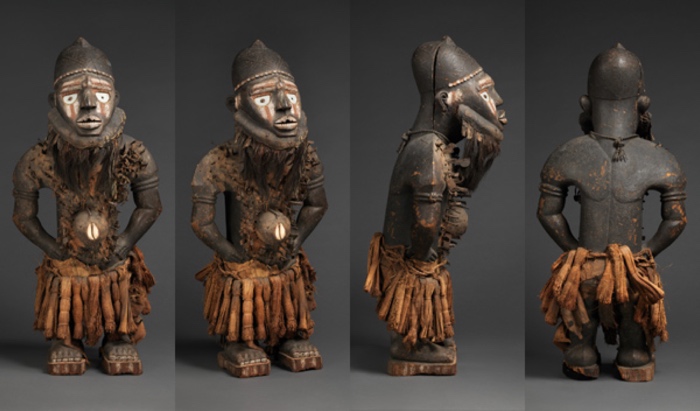
We started the unit with some of my favorite artworks from any time or culture, the Nkisi Nkondi power figures from the Kongo people of West Central Africa. These nkisi nkondi sculptures are truly captivating and exciting to anyone who sees them. From other teachers catching a glimpse at my copies in the office to the first reactions of the students to subs passing through, everyone stopped in their tracks to look more closely.

See if you can figure out what these nkisi nkondi sculptures were all about on your own before reading on.
Ask yourself:
- What’s going on here? Describe the sculpture–its contents, proportion in art, and pose.
- What do you think the nails are for? Were they placed there by the artist all at the same time or were the hammered in over a longer period of time?
- How do you think the nkisi nkondi was used by the people who made it? What was its function?
- What is the personality of this person? What is he doing?

After discussing the nkisi nkondi and developing ideas about it, I invite my students to stand up and put themselves into the pose of the nkisi nkondi as well as mimic the facial expression of the figure. It’s a pretty hilarious activity, but in all of my classes that did this, at least one student came to a conclusion that is close to the object’s original meaning.
After asking how they felt (after giggling about how they feel like they might be pooping), many students said they felt powerful. One 9th grader said he felt like a teacher getting onto a student, and a 6th grader said she felt like a parent getting onto her child.
I asked the students what it would feel like to be on the other side of that stance. What if this person were standing in front of you like that; how would you feel? Students said they would feel smaller, intimidated, or that they had done something wrong.

After the activity, I explain to the students the actual meaning and function of the artwork. Nkisi N’Kondi means “hunting spirit,” and its job in the community is to be an enforcer–enforcing laws and treaties, sealing vows/promises, and getting rid of evil. The students who felt like they were a teacher getting onto their students were right!
Important medicines, ancestral earth, and other things were placed in the stomach of the nkisi nkondi to give it the power and bring in the hunting spirit. In most cases, the hole was covered with a shell or mirror. When a promise or treaty was made, community members would drive a nail into the nkisi nkondi sealing the vow. If that promise was broken, the Nkisi N’kondi would hunt down the wrong-doer and punish him or her for his misconduct.

To spend some more quality time with the art as well as practice drawing skills, I had my students draw the Nkisi Nkondi.
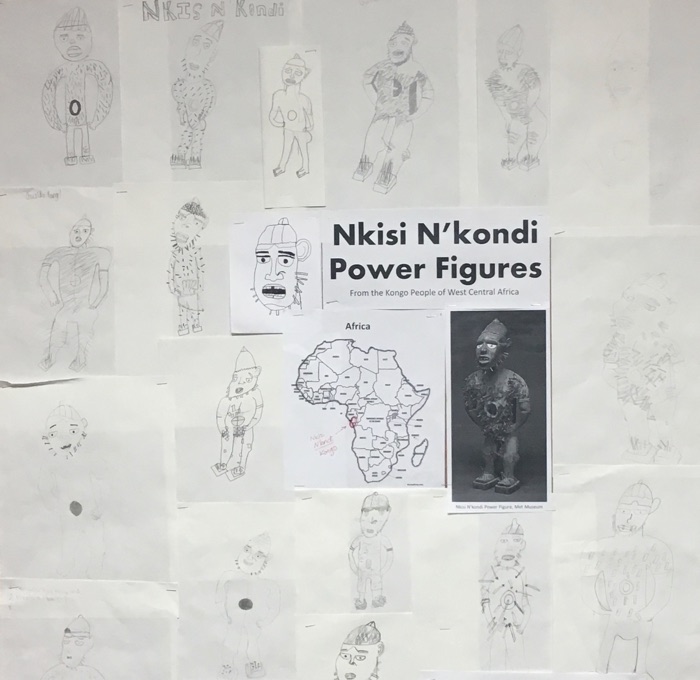
We also looked at and discussed Congo artist Trigo Piula’s usage of the nkisi nkondi figure in a contemporary painting.
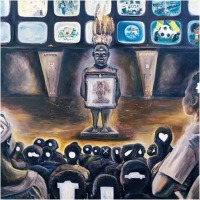
We will use elements of this sculpture, the Benin relief sculptures, and others to create one artwork that explores what fuels us as individuals in the way that the medicines and other items placed in the Kongo sculpture gave it its life.
Mentioned on the Art Class Curator Podcast…
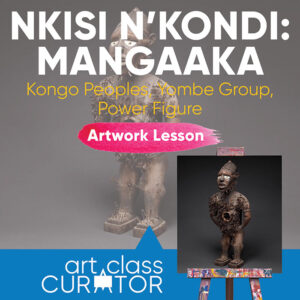
SPARKworks Lesson: Kongo Peoples, Nkisi N’Kondi Power Figure
This is a full lesson on the Nkisi N’Kondi Power Figures from the Kongo peoples. Students will explore and connect with this artwork through discussion, kinesthetic activities, and more!
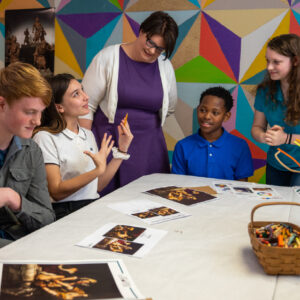
Get the Full Lesson!
This Lesson is in The Curated Connections Library!
Find the full lesson from this post along with hundreds of other art teaching resources and trainings in the Curated Connections Library. Click here for more information about how to join or enter your email below for a free SPARKworks lesson from the membership!


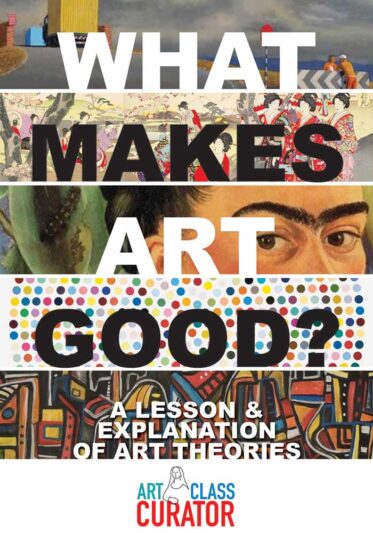


Leave a Comment